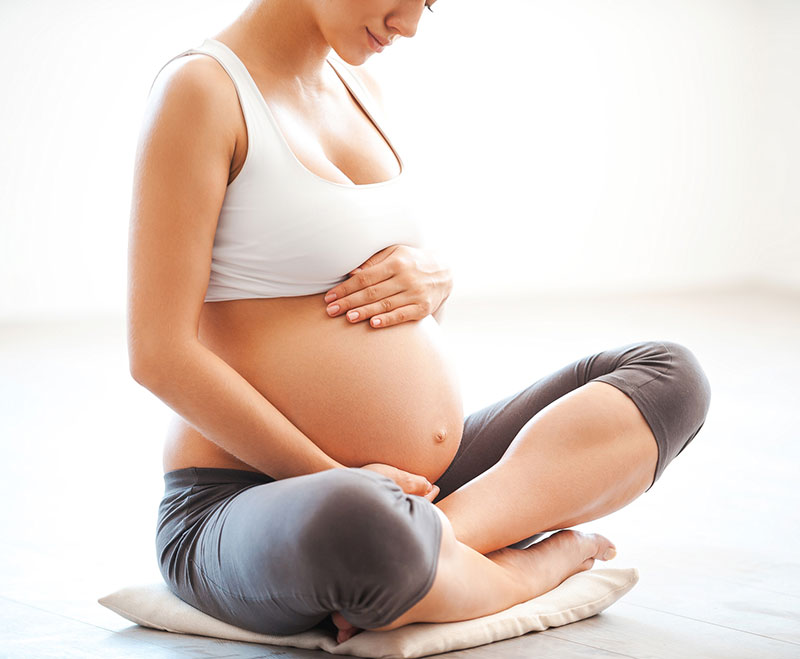Back
Your Body Changes During Pregnancy -- And Pelvic Therapy Is Here To Help!
By Dr. Christine Martirez PT, DPT on 5/24/2024

Pregnancy is a transformative journey that brings about significant bodily changes to support the growth and development of a new life. These changes, while natural, can sometimes lead to discomfort and various health issues. Understanding these changes, particularly in posture, breathing mechanics, and pelvic floor muscles, can help manage and alleviate common pregnancy-related issues. In this blog post, we’ll explore these bodily changes and discuss how pelvic floor physical therapy can provide support throughout pregnancy, labor, delivery, and postpartum recovery.
Postural Changes During Pregnancy
As the pregnancy progresses, the body undergoes several postural adaptations to accommodate the growing baby:
Increased Lumbar Lordosis:
The growing belly shifts the center of gravity forward, causing an increase in the natural curve of the lower back (lumbar lordosis). This adjustment helps maintain balance but can lead to lower back pain.Anterior Pelvic Tilt:
To counterbalance the forward shift, the pelvis tilts anteriorly, which can strain the hip flexors and lower back muscles.Rounded Shoulders and Forward Head Posture:
The expanding uterus and breasts can cause the shoulders to round and the head to move forward, leading to upper back and neck strain.
Impact on Breathing Mechanics and Pelvic Floor Muscles
The changes in posture and the growing uterus also affect breathing mechanics and the pelvic floor:
Breathing Mechanics:
The diaphragm, a primary muscle for breathing, becomes compressed as the uterus expands upwards. This compression limits diaphragmatic breathing and increases reliance on chest breathing, which can reduce oxygen intake, lead to increased fatigue, and decreased mobility through the pelvic floor muscles.Pelvic Floor Muscles:
The pelvic floor muscles, which support the bladder, uterus, and rectum, undergo increased strain due to the weight of the growing baby. This added pressure can weaken these muscles and lead to issues such as urinary incontinence and pelvic pain.
Common Issues During Pregnancy
Several common issues can arise during pregnancy due to these bodily changes:
Round Ligament Pain:
The round ligaments support the uterus and stretch as it grows, often causing sharp, sudden pain in the lower abdomen or groin.Pubic Symphysis Dysfunction:
Hormonal changes cause the ligaments in the pelvis to become more relaxed and stretchy, leading to instability and pain in the pubic symphysis, the joint at the front of the pelvis.Lower Back Pain:
Increased lumbar lordosis and the added weight of the baby can put significant strain on the lower back muscles, leading to pain and discomfort.Urinary Incontinence:
The added pressure on the bladder and weakened pelvic floor muscles can result in urinary incontinence, particularly when laughing, coughing, or sneezing.
How Pelvic Floor Physical Therapy Can Help
Pelvic floor physical therapy offers a comprehensive approach to managing and alleviating these pregnancy-related issues:
Throughout Pregnancy:
Postural Training:
Therapists teach proper posture and body mechanics to reduce strain on the back and pelvis, alleviating pain and discomfort.
Breathing Techniques:
Learning diaphragmatic breathing can improve oxygen intake, reduce fatigue, and support better core and pelvic floor function.
Strengthening Exercises:
Specific exercises target the pelvic floor and core muscles to maintain strength and support throughout pregnancy.
Pain Management:
Techniques such as myofascial release and joint mobilization can help alleviate round ligament pain and pubic symphysis dysfunction.
Preparation for Labor and Delivery:
Pelvic Floor Relaxation:
Therapists teach relaxation techniques for the pelvic floor muscles, which can facilitate a smoother labor and delivery.
Birthing Positions:
Guidance on optimal birthing positions can help reduce strain on the pelvic floor and lower the risk of injury.
Postpartum Preparation:
Recovery Planning:
Therapists provide a personalized plan for postpartum recovery, including exercises to gradually rebuild pelvic floor and core strength.
Education:
New mothers learn how to care for their bodies postpartum, including safe lifting techniques and strategies to prevent diastasis recti and other complications.
The bodily changes during pregnancy are profound and can lead to a range of discomforts and health issues. However, with the support of pelvic floor physical therapy, many of these challenges can be managed effectively. From addressing postural changes and breathing mechanics to providing targeted exercises and pain relief, pelvic floor therapists offer essential support throughout the entire pregnancy journey. By preparing for labor and delivery and planning for postpartum recovery, pelvic floor physical therapy helps ensure a healthier and more comfortable experience for expectant mothers.
Navigating pregnancy or postpartum? Reach out to us at Pelvic Health Center in Madison, NJ to set up an evaluation and treatment! Feel free to call us at 908-443-9880 or email us at receptionmadison@pelvichealthnj.com.
Read More:
How Chronic Pelvic Congestion in Men Contributes to Prostatitis By Shannon Strauch, PTA, STMT-1 on 12/11/2024 How lymphatic issues can cause symptoms of prostatitis Prostatitis and Tight Pelvic Floor Muscles: A Comprehensive Guide By Shannon Strauch, PTA, STMT-1 on 12/10/2024 How a tight pelvic floor can be the reason for prostatitis symptoms
Are you ready to live pain free?
Request An Appointment